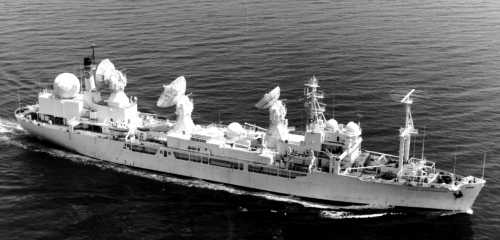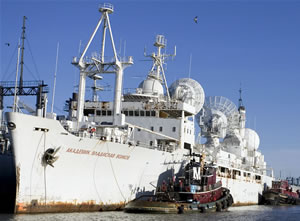The wreck that made £30 million
This Is Plymouth
BUSINESS leaders believe Europe's first artificial diving reef off Whitsand Bay has generated up to £30million in its first five years.
On the eve of the fifth anniversary of the sinking of the former HMS Scylla, Tim Jones, chairman of the Devon and Cornwall Business Council, said the wreck had created an "absolutely massive boost" to Plymouth's economy.
He also revealed that numerous business leaders in the South West region doubted the National Marine Aquarium-led project, believing it would fail.
But aquarium bosses say their figures show about 42,000 people have visited the wreck on 7,000 dive boats since its spectacular sinking on March 27, 2004.
"There were plenty of doubting Thomases at the time," Mr Jones said.
"A lot of people were supportive of the idea, but there was a great deal of doubt as to whether it would be a success.
"I'm delighted to say they have had to eat their words."
Mr Jones added: "In the last five years Scylla has contributed somewhere from £25million to £30million to the local economy, and will continue to do so.
"Scylla was one of the most bold, potentially risky, high-profile projects that we have seen in Plymouth for many years.
"Fortune favours the brave and it has been brilliant, not just for the city psychologically, but also for the fishermen, equipment and training providers and tourism."
Tourism and aquarium bosses have also hailed the success of the venture
Marine scientists believe the scuttled former Royal Navy frigate is now home to about 260 sea species.
"Scylla has surpassed our expectations both in terms of visitors and colonisation," said Deborah Snelling, a scientific officer at the National Marine Aquarium.
"The interest from the diving community and other visitors has been maintained throughout the whole five years.
"From a colonisation point of view Scylla has now turned into a wreck 'community'."
While Scylla has attracted many of the typical sea creatures associated with a shipwreck, such as conger eels, whiting, mussels and barnacles, queen scallops, cuttlefish and scorpion fish, Mrs Snelling said scientists had been "very interested" in some of the other visitors.
"We have had a nationally rare sea slug and Scylla has also attracted pink sea fans, which colonised in August 2007," Mrs Snelling added.
"They are very rare and protected."
Dr Keith Hiscock, of the Marine Biological Association, said: "Scylla has been a great attraction for divers, scientists and numerous species, and has been very worthwhile."
The National Marine Aquarium has been monitoring and logging the wreck for the last five years and will continue to do so for a further five.
Malcolm Bell, chief executive of South West Tourism, said: "There is no doubt that Scylla has been a success – and she continues to be.
"She has a unique selling proposition in that Scylla is Britain – and Europe's – only artificial diving reef.
"When divers visit they not only dive on Scylla, they visit other sites and stay and spend locally.
"It has a beneficial effect on the local economy."
HMS SCYLLA: factfile
The Leander Class frigate was the last warship ever to be built in Devonport and was the last of the Royal Navy's steam-powered frigates.
She was launched in 1968 and decommissioned in 1993, after which she was moored at Portsmouth and left to rust.
The Ministry of Defence put her on the market in 2000, attracting interest from groups who wished to preserve her as a museum or monument in Plymouth. A consortium aiming to turn the Scylla into Britain's first artificial dive reef at Whitsand Bay became the frontrunner to buy the vessel when it gained the backing of the National Marine Aquarium, which eventually took over the bid and bought the ship.
The project to turn the warship into a dive reef included a substantial clean-up to prevent pollution and cost in the region of £250,000.
HMS Scylla was scuttled a mile off the Cornish coast in Whitsand Bay on March 27, 2004, with a series of controlled detonations watched by thousands on the cliff tops. She became Europe's first artificial diving reef.
Explosives experts anchored her in position and used 46 different timed charges to sink her in less than three minutes.
____
www.artifical-reefs.blogspot.com








